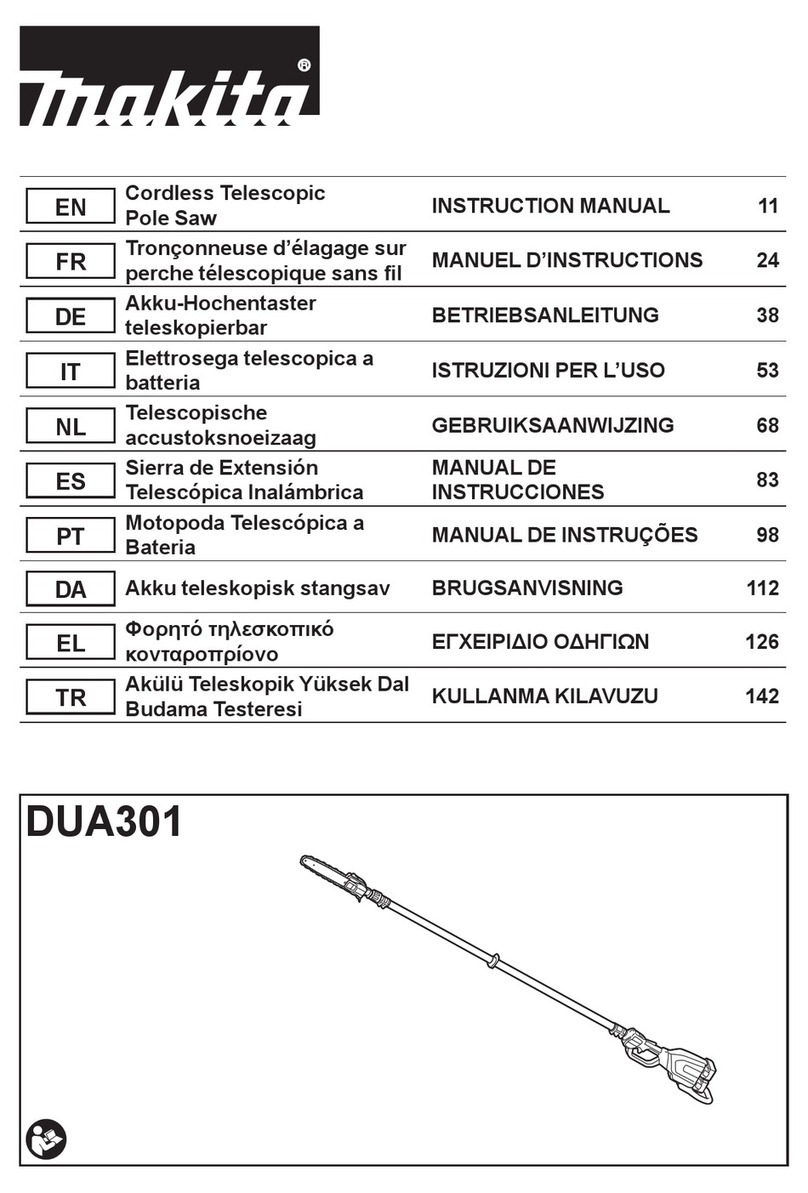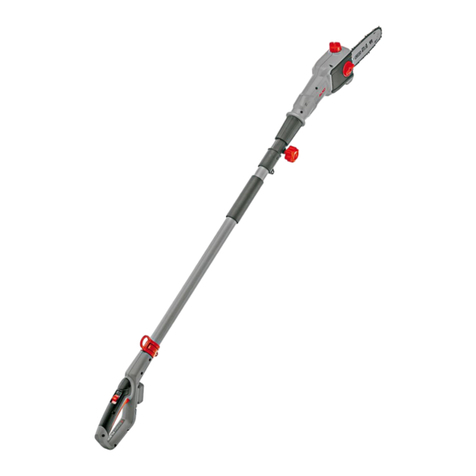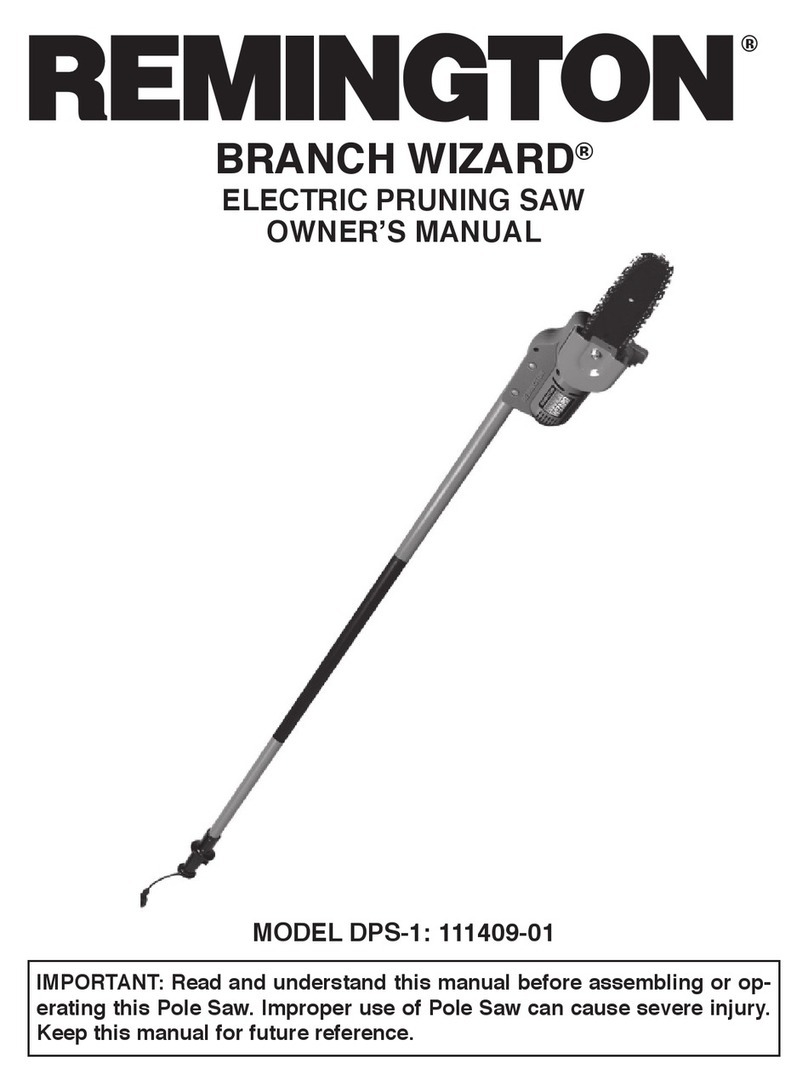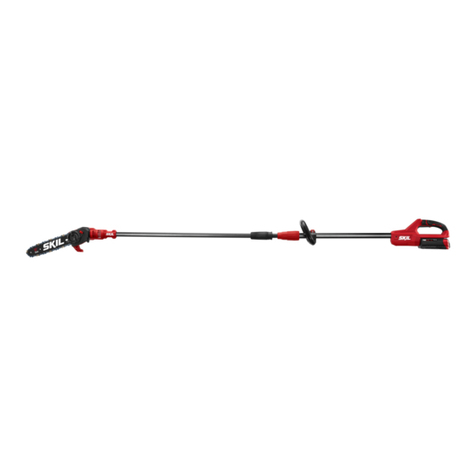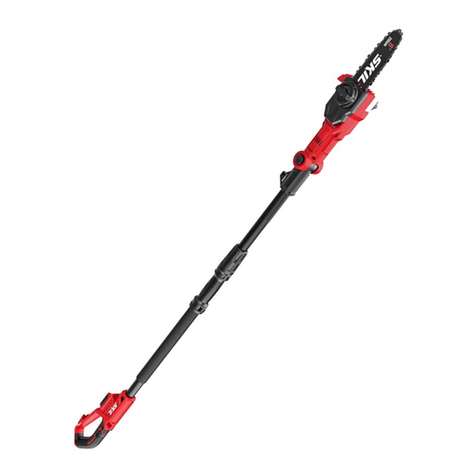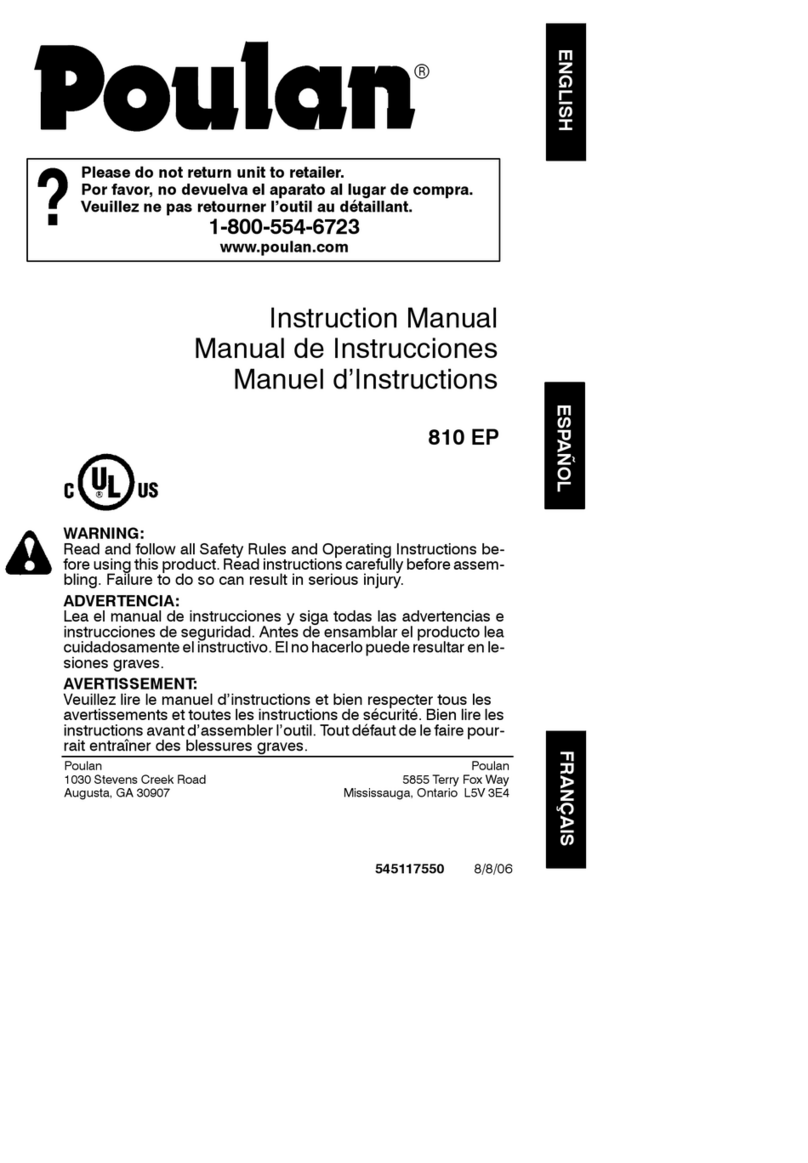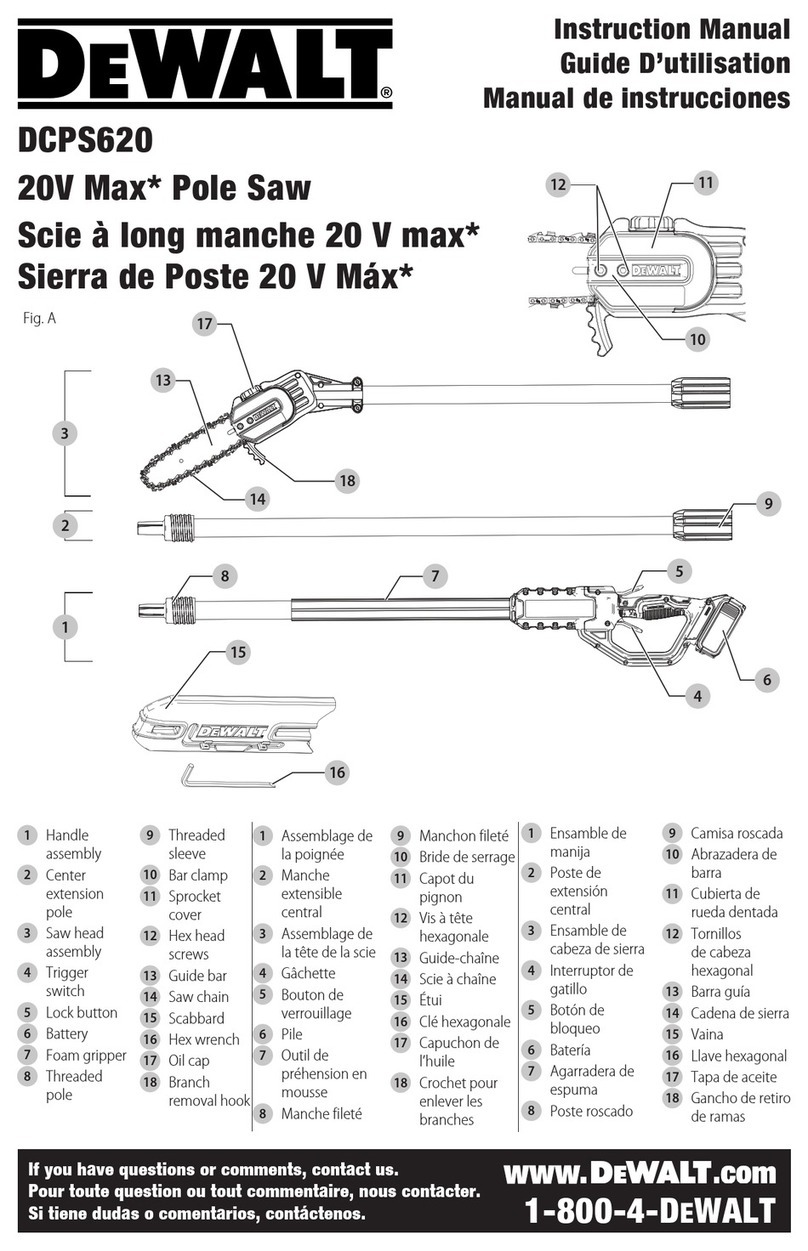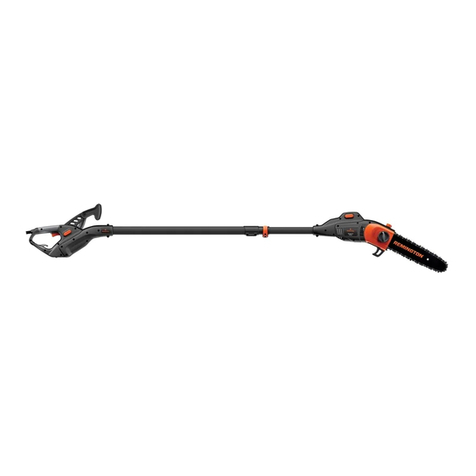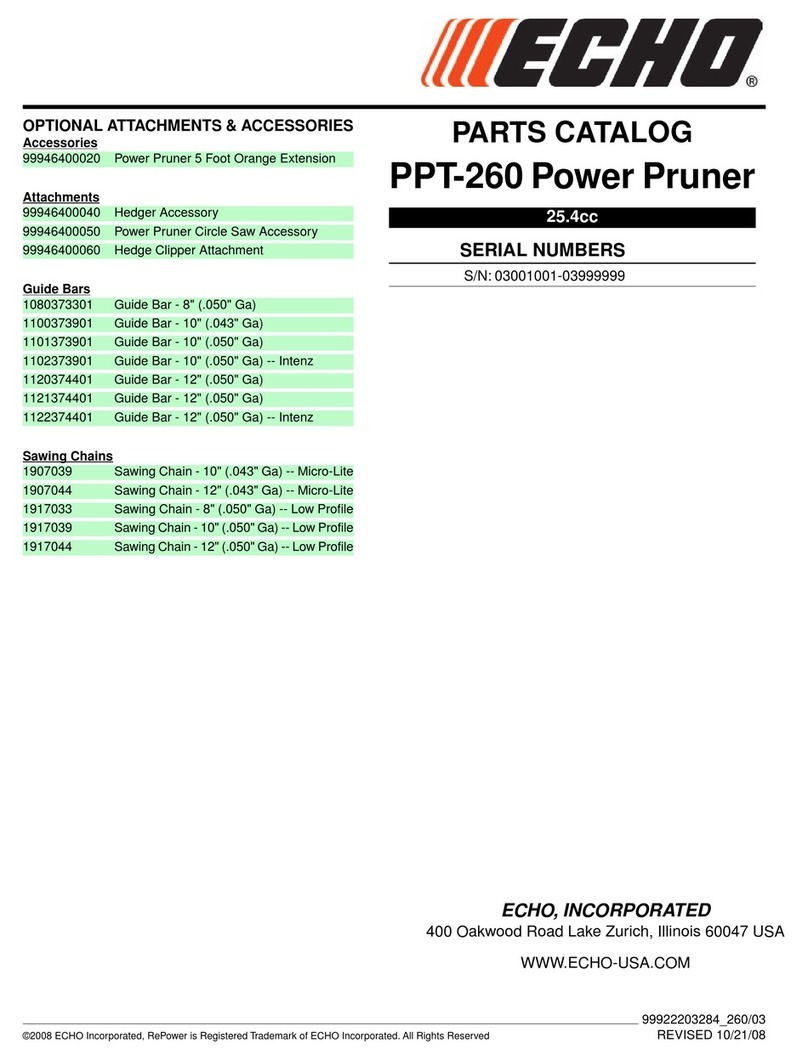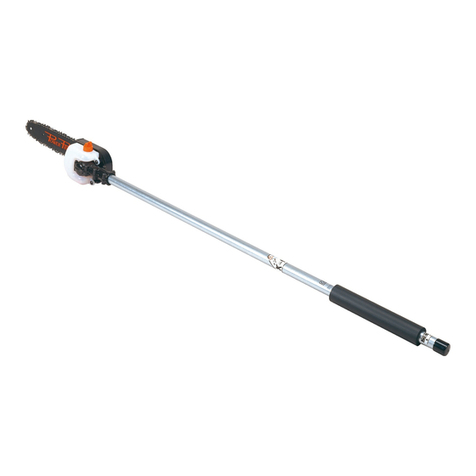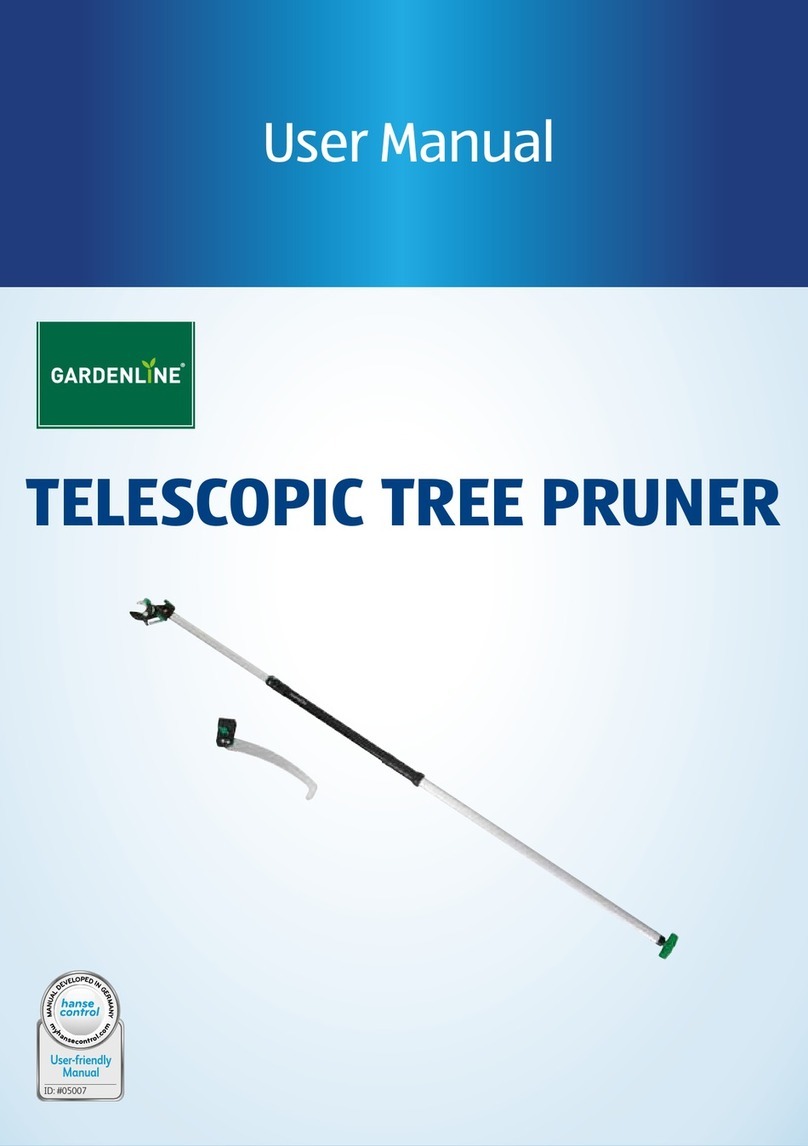
4
Store idle pole saw indoors – When not in use, pole saw should be stored indoors in a dry
and high or locked-up place with the battery pack removed and out of reach of children.
Maintain pole saw with care – Keep cutting edge sharp and clean for best performance and
to reduce the risk of injury. Follow instructions for lubricating and changing accessories. Keep
handles dry, clean, and free from oil and grease.
Check damaged parts – Before further use of the pole saw, a guard or other part that is
damaged should be carefully checked to determine that it will operate properly and perform
its intended function. Check for alignment of moving parts, binding of moving parts, breakage
of parts, mounting, and any other condition that may affect its operation. A guard or other
part that is damaged should be properly repaired or replaced by an authorized service center
unless indicated elsewhere in this manual.
Prevent unintentional starting. Ensure the switch is in the off-position before connecting to
battery pack, picking up or carrying the pole saw. Carrying the pole saw with your nger on the
switch or energizing pole saw that have the switch on invites accidents.
Disconnect the battery pack from the pole saw before making any adjustments,
changing accessories, or storing pole saw. Such preventive safety measures reduce the
risk of starting the pole saw accidentally.
Recharge only with the charger specified by the manufacturer. A charger that is suitable
for one type of battery pack may create a risk of re when used with another battery pack.
Use pole saw only with specifically designated battery packs. Use of any other battery
packs may create a risk of injury and re.
When battery pack is not in use, keep it away from other metal objects, like paper clips,
coins, keys, nails, screws or other small metal objects, that can make a connection
from one terminal to another. Shorting the battery terminals together may cause burns or a
re.
Under abusive conditions, liquid may be ejected from the battery; avoid contact. If
contact accidentally occurs, flush with water. If liquid contacts eyes, additionally seek
medical help.
Liquid ejected from the battery may cause irritation or burns.
Do not use a battery pack or pole saw that is damaged or modified. Damaged or modied
batteries may exhibit unpredictable behavior resulting in re, explosion or risk of injury.
Do not expose a battery pack or pole saw to fire or excessive temperature. Exposure to
re or temperature above 265°F / 130°C may cause explosion.
Follow all charging instructions and do not charge the battery pack or pole saw
outside of the temperature range specified in the instructions. Charging improperly or at
temperatures outside of the specied range may damage the battery and increase the risk of
re.
Have servicing performed by a qualified repair person using only identical replacement
parts. This will ensure that the safety of the pole saw is maintained.
Do not modify or attempt to repair the pole saw or the battery pack (as applicable)
except as indicated in the instructions for use and care.
SAVE THESE INSTRUCTIONS



